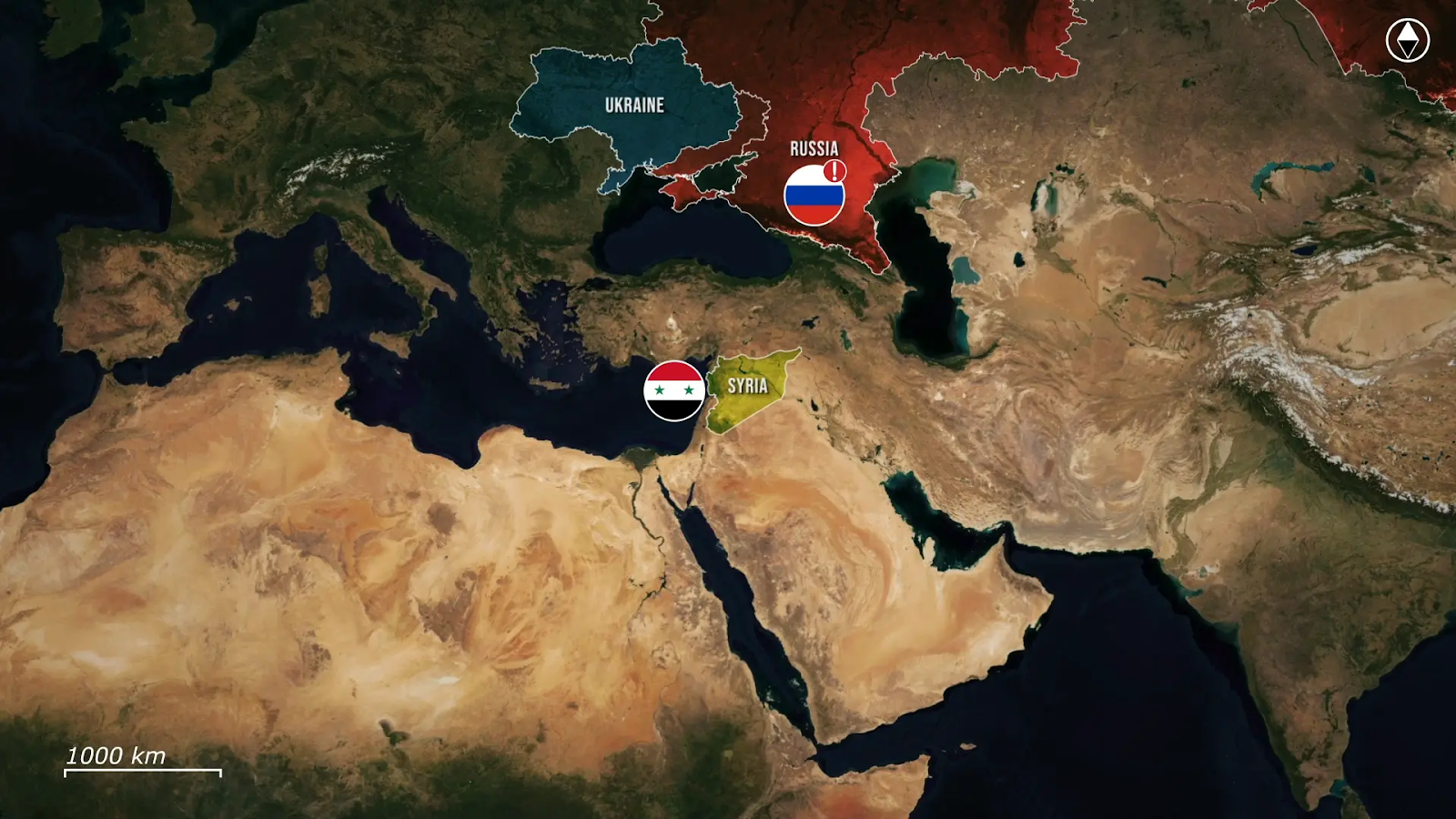The fall of the Assad regime marked a turning point for Russia’s military operations, not just in Syria but across the whole Africa. With the loss of its key bases in Syria, Moscow suddenly found itself amid a complete logistical collapse, exposing the full extent of its strategic miscalculation.

The goal of Russia is to establish logistics nodes that support its military operations and expand its influence across the Middle East and North Africa.

Securing a primary logistics hub in Syria had been a central objective, as it allowed Moscow to sustain operations across multiple regions without relying on Western-controlled routes.
The reason why Russia wants to achieve this goal is that Syria has been central to its military logistics, ensuring the uninterrupted movement of military assets, sustaining operations, and coordinating regional military activities.

Khmeimim Air Base served as a critical refueling hub for transport aircraft, allowing them to reach Africa without complex mid-air refueling operations.

Meanwhile, the Tartus naval base provided essential resupply and repair services for Russian warships operating in the Mediterranean, reducing reliance on lengthy return trips to Sevastopol, already restricted by Turkish control of the Bosporus.

With Turkey closing off the Black Sea to Russian military traffic, Syria became the last viable transit hub for sustaining Moscow’s operations in Africa.

Russia has also used Syria as a staging ground for Wagner forces, particularly those operating in Libya and Sudan. Equipment, personnel, and ammunition moved through Syria before being deployed further south.

This logistical structure has been vital for ensuring continuous military support to Haftar’s forces in Libya and securing Russian contracts in Sudan’s gold mining sector.

In order to achieve this goal, Russia invested in Khmeimim and Tartus, modernizing infrastructure and expanding runways to accommodate large cargo aircraft like the Il-76 and An-124. These facilities allowed Russia to sustain military operations in Africa without relying on unpredictable third-party agreements. Russia also attempted to develop secondary supply routes through Libya and Sudan, but these were always dependent on Syria as the first transit point. The result of these actions was that Russia had developed a stable and self-sufficient logistical network, enabling it to operate beyond its immediate borders. However, this strategy also created a dangerous dependency on Syria, seeing that they needed to go to Africa.

The fall of the Assad regime cut Russia off from its Syrian bases, disrupting its entire logistical framework. Khmeimim was no longer available for refueling, forcing Russian aircraft to take longer and riskier routes over the Caspian Sea, through Iran, and down the Arabian Sea, significantly increasing fuel costs and logistical strain. Mid-air refueling became necessary for reaching Africa, complicating operations and limiting payload capacity. Tartus was lost as a naval resupply point, leaving Russian warships with no reliable access to the Mediterranean ports. This effectively forced Russia out of the Mediterranean, as ships now had to refuel and resupply in the Black Sea, still restricted by Turkey, or attempt to negotiate costly and diplomatically complex access to North African ports.

Without these logistical assets, Russia’s entire strategy in Africa and the Middle East began to unravel. Wagner forces in Libya and Sudan faced supply shortages, weakening their ability to sustain operations. The once-steady flow of weapons and reinforcements slowed considerably, while Russia’s capacity to extract resources from Africa, such as gold from Sudan, was severely disrupted. Efforts to establish alternative supply chains through Libya and Sudan proved unreliable, as political instability in both countries made long-term planning impossible. With this new reality, Russia has been forced to restructure its logistics network only to reveal that there are no viable alternatives.

Libyan airbases offer limited reliability, as they are out of direct reach, and are vulnerable to Western airstrikes and internal conflict. Sudan’s military bases are also out of direct reach, and its internal instability makes long-term reliance dangerous. Other potential supply routes, such as through Iran, are even further from African bases and add diplomatic complications, as Iran has strategic priorities of its own and cannot fully replace Syria’s role. Meanwhile, Western intelligence has taken advantage of Russia’s weakened logistics, increasing surveillance and restricting Moscow’s ability to move freely. As a result, Russia’s influence in Africa and the Mediterranean has been diminished, and its ability to sustain long-term military engagements remains under serious threat.

Overall, Russia’s reliance on Syria as the centerpiece of its logistics network has backfired, exposing the fragility of its overseas operations. The loss of Khmeimim and Tartus did not just create logistical challenges. It crippled Russia’s ability to sustain its military operations in Africa and the Mediterranean. This failure was not merely a setback but a fundamental strategic error, one that left Moscow scrambling for solutions where none truly exist. With no easy way to rebuild what was lost, Russia’s capacity for long-term power projection will remain severely weakened.









.jpg)








Comments